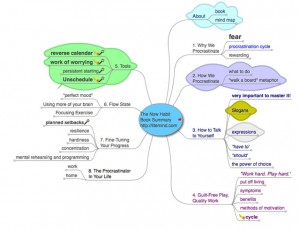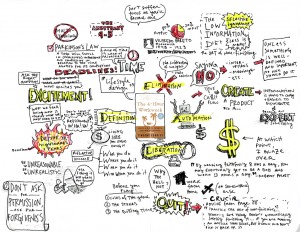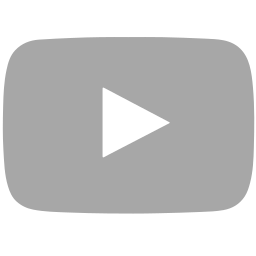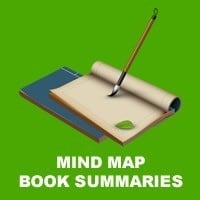
One of the biggest reasons people start with mind mapping is that they can use it for note-taking. This can be the notes you take from meetings, conversations, interviews, or from books. Today we will have a look at mind mapping book summaries, what they are, how you make them, and why you benefit from them.
A mind (map) is a terrible thing to waste
Can you remember when you were in school and you had to take notes? I remember when I was about 10 years young, we had to take notes from a new show for children. Everybody was taking notes, and I had absolutely no idea how to do it. So what did I do? That’s right, I just tried to write down everything that was being said.
You know what? I did manage to write really fast! I wrote everything on several pieces of paper. When the 15 minute-show was over, I was feeling pretty good about myself. After all, I was able to keep up and wrote a whole bunch of stuff that was said in the show.
My feelings changed when I tried to read my notes. About half of them were still readable. But I missed so much key information that the result was poor, really poor…
Over the years, I learned how to take better notes, listen to keywords and write them down. I learned about mind mapping and created smarter ways of note-taking. My skills improved a lot and when I take notes now, I tend to listen most of the time and write few words.
Now I train people in mind mapping and how they can take notes. One of the questions I ask people is how did you learn to take notes?
You know what the common answer to this question is? They just do what they saw other people do. And, they stuck to the system they thought was the best and easiest.
Answer this question for me please: is your way of note-taking the best system for you? Or could there be space for improvements that can make your system even better?
Most people usually tell me their system can be improved. In fact… most people don’t even have a system. They just wing it!
The problem is if you want to learn a new system, it will be strange to use it. You won’t feel comfortable. It is different from what you are used to. Since most people don’t have a real NEED to change, they won’t change. Think about it, if your system allows you to take notes, and you don’t need to improve significantly, why would you change? You probably won’t.
Let’s change that for a second then.
Imagine you HAVE to change. If you don’t you would lose your job, house, family, money, etc. Would that help you change? Would the discomfort of changing the way you take notes be something you can go beyond? I am sure it would.
Today, I want to show you a way to take notes that is probably different from the way you take notes right now. We will use mind mapping for this. Even if you use mind mapping to do this already, I am sure you will benefit from reading this page. There are some things you will learn and read that will change even your mind mapping skills.
Mind mapping offers HUGE benefits when taking notes
Did you know about the left/right brain myth? It says that your left brain side is the logical side. This side loves words, structure, and detail. The right brain side is the emotional side. Your right brain side like color, images, and the big picture of things.
This myth is being told for many decades now. The mind mapping world loves it. It says that we use our left brain most of the time and we neglect our right brain side. Is this not true then? Well, there is a really small difference between the two brain sides. The left is slightly more looking at words, right loves images a little bit better. But the difference is not as black and white as people might tell you.
The biggest lesson from this myth is probably that we should feed our brains not just words, but also images. We all love images and we use them not enough in our notes. Think about it… we love images so much that we often spend hours upon hours watching TV, night after night… And when you look at your notes… probably no images, ever…
Mind mapping asks you to create images in your maps and creates the way you construct mind maps images of the information.
Your brain will love the outcome which is the mind map. The mind map gives your brain something interesting to look at both the images (the picture) and the structure of information.
Another big benefit is that when you create mind maps with your notes, you will reduce the amount of information significantly. By using keywords, you often have far less than 10% of the original information. Your map will help you to re-create the original content. You will spend less time taking notes, and you will be more focused on your reading or listening.
By simplifying your books and reports, you will feel less overwhelmed and you experience less stress.
Oh… one last benefit… you will remember the information much faster and a lot longer because you create a picture of it. Your brain remembers pictures up to 30 times longer than words… makes you think, right?
Here are some examples of mind mapping book summaries. I added a link to the source so you can view more map book summaries if you like.
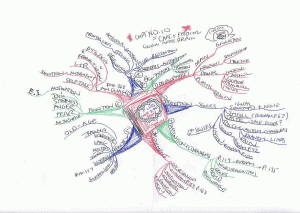
2 simple methods for mind mapping book summaries
As you can see in the mind maps that I showed you, there are other people who create mind maps from books they read. You can do the same with your books as well.
Most people, when they use mind maps for summarizing books, use one of two systems described below (read, apply, benefit – I would say :)).
Create mind map summaries when reading
You go through your book and when you see important information, you add this to your mind map. This can be a mind map on paper, but also a digital mind map.
The mind map is created branch by branch. When you finish reading one chapter or section, you create a new branch. You create a map in the same order as the book is written.
The benefit is that you create mind maps immediately and you probably save time summarizing your book in a mind map this way.
However, this method will not work for everybody since you need to know exactly what information you need or want to add. If you don’t, you end up with a map that is filled with noise (by the topics you don’t need).
Create mind map
ping book summaries based on notes
You read the book, you underline or highlight lines of text in your book, or you write your notes on a piece of paper. Then, after you finished, you take your notes and add this to your mind map.
The benefit of this is that you do one thing at a time. You read first (and highlight) and then you create a mind map from your notes. This doesn’t really apply when you write notes on a piece of paper of course.
Another benefit is that by using this method, you can probably create more interesting or powerful connections between pieces of information later on. After all, you have your notes on paper, and then you create a mind map. Information from the beginning of the book, chapter, or section may turn out to be useless or not useful for your summary. You may not know this but you start mind mapping from the start (and thus add it to the map, wasting time, space, and energy (I wonder what Albert Einstein would say about that…).
Still, a negative aspect of this method is that you create two summaries. The first one is on paper (or highlighting), and the next one in a mind map. This takes additional time which you may not have.
I suggest you decide on which method you use before you start mind mapping your book. In general, the first method works best if you have a clear goal and are already familiar with the content and the book. The second method works best if you are going into uncharted territory :).
Here is what usually goes wrong…
I train many people in mind mapping their books (I teach people the third method for this). What I often see is that there are three things going wrong in the way people mind map their books.
Adding too much information
When you add too much information, you end up with a map that is really, really big… That could be fine, except when you want to use the map to study a topic or when you want to memorize the information in the map.
A simple way to solve this is of course adding less information. But what happens then is that people fear they are losing information and they won’t understand what they mind mapped. Don’t worry… when you create the map, you will probably remember the information even without lots of words.
Also, in most good mind mapping tools, you can add notes to nodes in your map. This allows you to put the keyword in the map itself, and the definition in a text area connected to the node. The map is no longer filled with sentences and disturbing ‘noise’ and you have a clear overview of your book.
The third way is to break up your map into multiple maps. Create a map for each chapter for example, instead of having one huge map for the entire book. Just make sure you create (hyper)links between all maps to easily navigate from one map to another.
People can’t find the right keywords
This could be tricky when you are reading your book. Often the easiest way to find keywords is by looking at the words printed in bold, italic, or underlined. When you have a book from the library, you may be in luck. Perhaps a previous reader underlined important concepts and words for you. This way you can use them.
Another thing you can do is stop reading after each paragraph. Pause a few seconds and summarize in one or two words what you just read. You can have a look at the paragraph of course… This is no exam time.
The words you find can be placed on the map immediately, or you write them on a piece of paper or in your book.
They use long sentences
This is a ‘mistake’ most beginners make. They write long lines so they won’t miss anything.
Have a little bit of faith that you will find the right keywords and that these will help you understand what the book tells you. If you still hesitate to use only keywords, use the notes tip I just gave you. This will reduce the number of words in the map and will create a clearer overview that you can use at work or when studying.
Action points:
What I would advise you to do is start mind mapping book summaries from now on. You now know that a mind map is something that will help you remember the information faster. You also read that a mind map is usually created in far lesser time than traditional notes.
When you combine these two advantages, I am sure you will start using mind maps for your own book summaries. Here’s how you get started:
- choose if you want to mind map your book immediately or if you want to use your normal notes to do this.
- make sure you use keywords and not long sentences. The mind map will be too large if you keep using sentences.
- after you created the map, update it, and use it for your work or studies. A mind map created without using it is not smart.
Enjoy mind mapping your book!
PS.: The above way of mind mapping works like clockwork. Millions of people around the world use it and benefit from it.
If you want to be even more effective and summarize an entire (non-fiction) book in just one hour… you definitely need to have a look at my manual: Summarizing With Mind Maps. I am sure you like the system that helped thousands of people around the world.
image: writing
